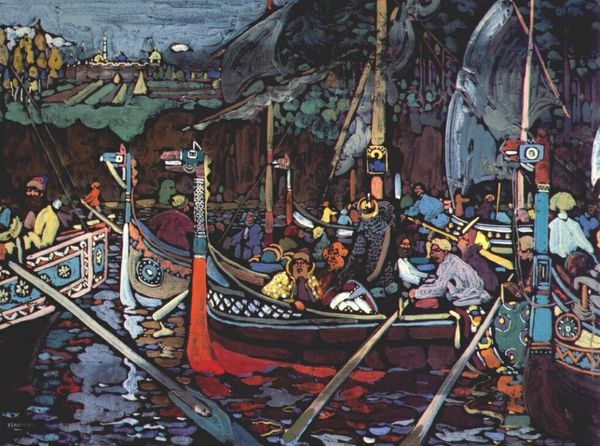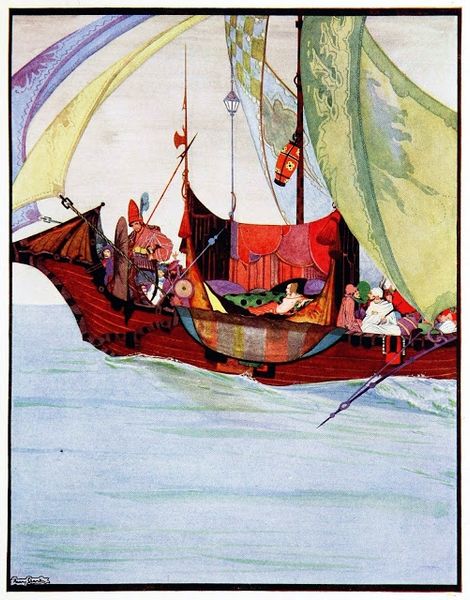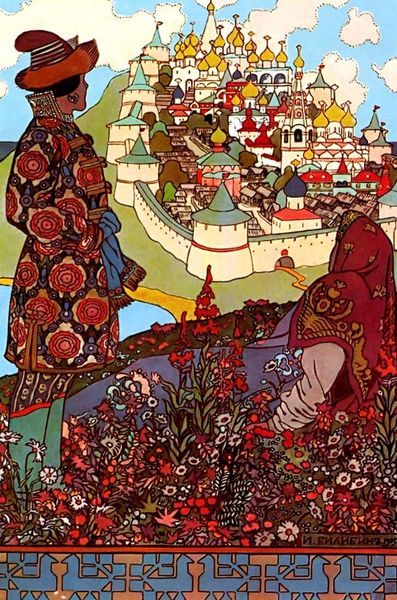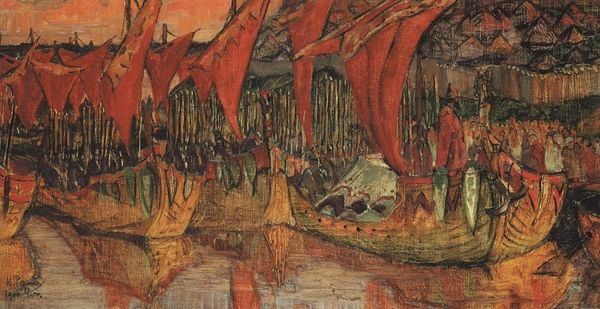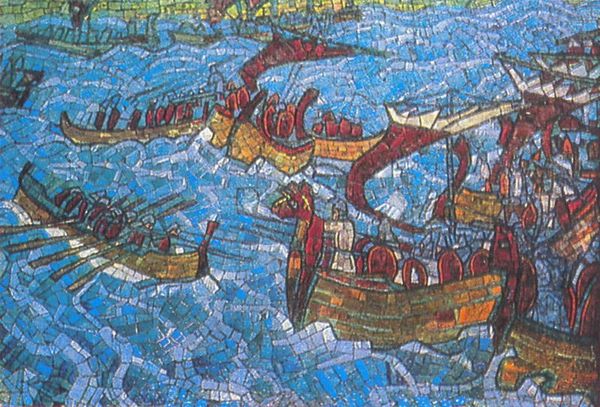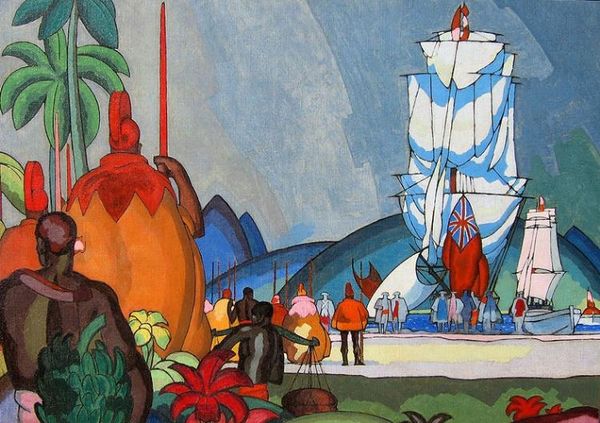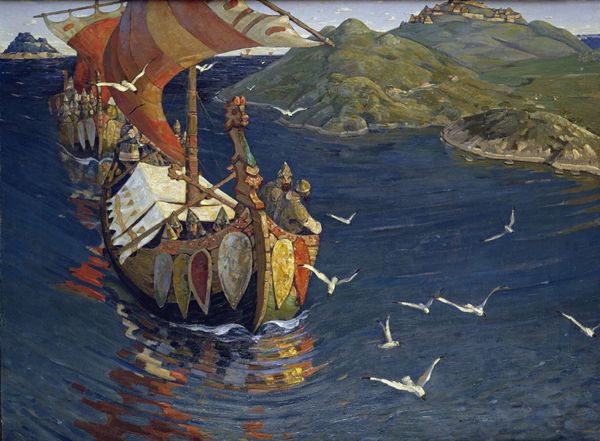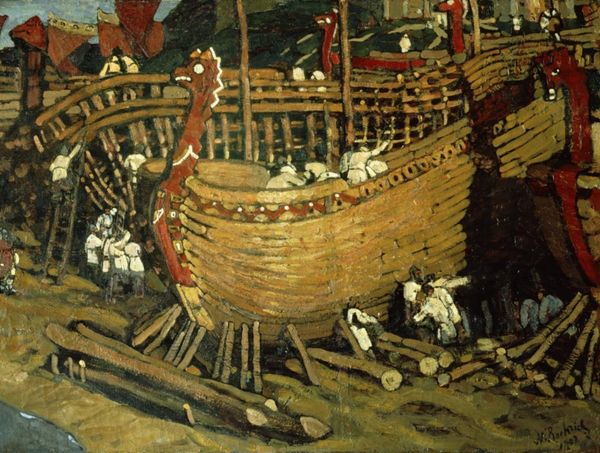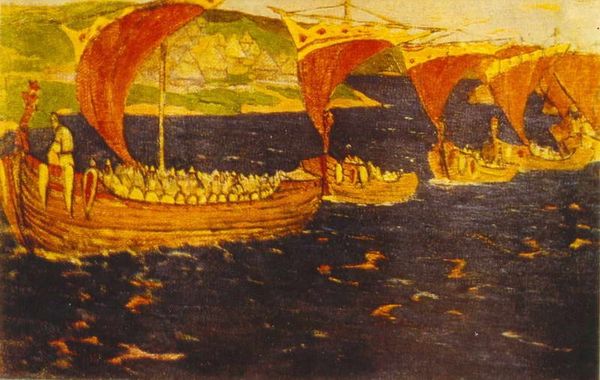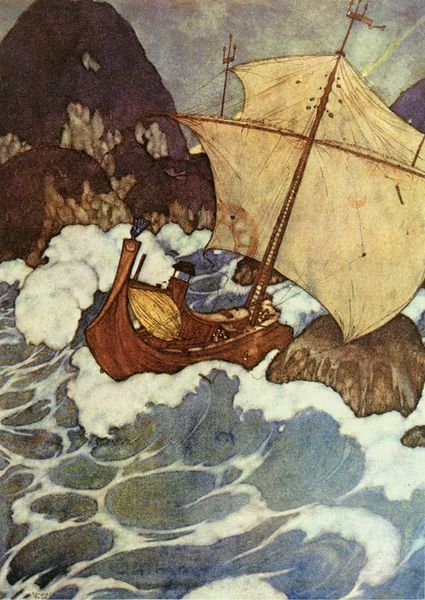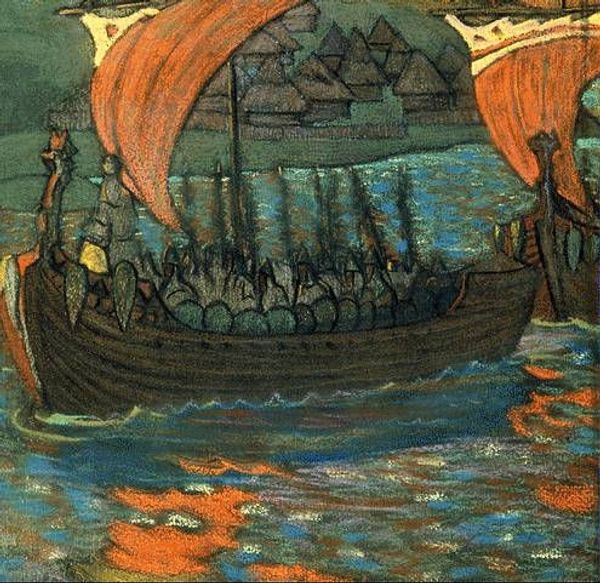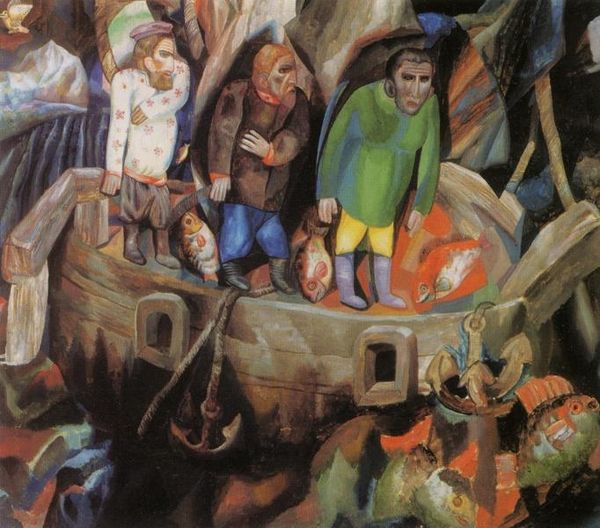
painting, oil-paint, impasto
#
ship
#
painting
#
oil-paint
#
landscape
#
impasto
#
folk-art
#
geometric
#
orientalism
#
symbolism
#
russian-avant-garde
#
history-painting
Copyright: Public domain
Curator: This striking oil painting by Nicholas Roerich, completed in 1905, is titled "Ancient Russians at Dnieper". It pulses with symbolic intent and a fascination with a heroic past. Editor: It feels… theatrical. The ships lined up, the figures posed on the shore, it's like a scene from a play rather than a straightforward historical depiction. Curator: Indeed, Roerich wasn't aiming for strict realism. The impasto application of the oil paint lends a tactile, almost primitive quality, drawing on folk art traditions. And the colors, while vibrant, feel purposefully muted to evoke a sense of antiquity. Note the geometric patterns, which echo a symbolic language lost to time. Editor: The ships themselves feel laden with symbolism. Their prows depict beastly heads, hinting at power, protection, or even a pagan spirituality perhaps? It makes me wonder about the function and political use of 'history painting' like this at the turn of the century. Was Roerich idealizing a specific moment, or weaving a more complex narrative about Russian identity? Curator: Roerich's focus often returns to exploring deeper psychological truths through historical imagery, seeking what it tells us about the archetypes and enduring stories shaping Russian consciousness. His engagement with symbolism pulls the historical depiction into more universal questions of heritage. Editor: So, he uses history as a stage? I'm intrigued by the orientalist touches—there's an element that looks to be borrowing styles from other Eastern cultural depictions, even as it tries to define a particularly "Russian" identity. Is it successful, or does it contribute to a more general fantasy of the East? Curator: I believe he seeks an essential, enduring "East," looking through shared symbolic visual expression, from the Russian North to India. While dated by today's lens on cultural depictions, Roerich sought to bridge not divide. He built his cultural and psychological interpretation around that premise. Editor: That makes sense in the context of the Russian avant-garde movement he was a part of. The period saw such intense experimentation with historical and cultural themes. Curator: Exactly, his work can be a vital contribution to considering what they valued. Looking closely reveals his personal exploration. It invites a similar reflection within ourselves. Editor: Ultimately, even through our current view, there’s a compelling theatricality, the colors and simplified shapes give the whole scene a kind of power and immediacy.
Comments
No comments
Be the first to comment and join the conversation on the ultimate creative platform.
